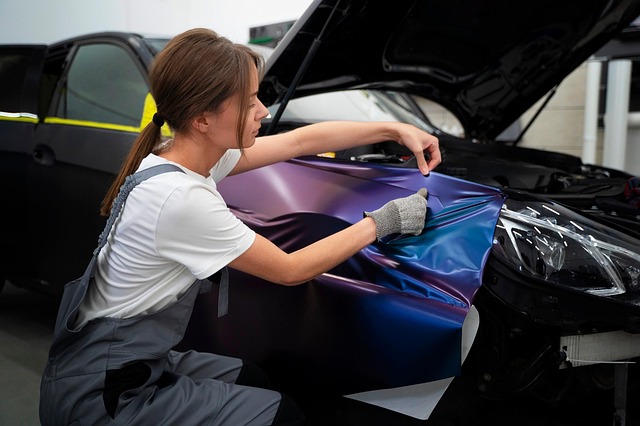Long-Term Maintenance Tips to Preserve Automotive Paintwork
Long-term care of a vehicle’s paintwork reduces visible wear and preserves value. Regular cleaning, careful detailing, and targeted touchup for minor scratches help maintain the finish and slow degradation of the clearcoat and primer layers. Consistent upkeep and appropriate products can limit abrasion and environmental damage while keeping the surface looking uniform.

Caring for automotive paintwork over time involves more than occasional washing. A steady routine of cleaning, inspection, and targeted repair reduces cumulative abrasion and helps preserve the clearcoat and finish. Understanding how scratch removal, polishing, and touchup integrate with detailing and restoration steps allows owners to choose appropriate maintenance that supports long-term protection without causing additional damage.
How should small scratches on paint be assessed and treated?
Small defects vary from surface-level clearcoat scratches to deeper paint breaches. Begin by cleaning the area to remove contaminants, then examine the scratch under good light: if the defect only affects the clearcoat it may respond to polish or a mild compound; if primer or bare metal is exposed, a touchup or professional repair is needed. Use non-abrasive cleaners first and avoid aggressive rubbing that increases abrasion. Accurate assessment helps select the right approach—compound, polish, or touchup—so you treat the surface without compromising surrounding finish.
When is polish, compound, or buffing appropriate?
Polishing and compound work remove fine defects and oxidation by abrading the clearcoat in a controlled way to restore gloss. Compounds are more aggressive and best for heavier scratches or oxidized paint; polish refines after compounding or for light defects. Buffing with a machine can speed up the process but requires correct pads, speeds, and technique to avoid heat buildup that damages clearcoat or primer. Test on a small area first, work progressively from less to more aggressive products, and follow with a protective layer to maintain the restored surface.
How do clearcoat, primer, and finish affect restoration choices?
The vehicle paint system typically includes primer, basecoat, and clearcoat. Clearcoat provides gloss and abrasion resistance; once it is penetrated, restoration options change. If only the clearcoat is scratched, polishing or light buffing can often restore appearance. If primer or basecoat is visible, a touchup paint matched to the original color and careful blending are required to avoid uneven finish. Understanding which layer is affected prevents inappropriate polishing over exposed primer, which can worsen corrosion risk and make a repair more complex.
What detailing and surface protection steps support long-term maintenance?
Regular detailing routines—safe washing methods, decontamination (clay bar), polish if needed, and applying protection—preserve clarity and reduce abrasion. Use pH-neutral shampoos, microfiber drying towels, and separate mitts for wheels to prevent cross-contamination. After correction or polishing, apply a protective layer such as high-quality wax, sealant, or paint protection film to shield the clearcoat from UV, bird droppings, and minor abrasion. Periodic inspections and light maintenance detailing prolong the time between more intensive restorative actions.
How can abrasion and environmental damage be prevented?
Prevent abrasion by minimizing contact with abrasive materials and avoiding automatic brushes that trap grit. Park in shaded areas where possible to limit UV-related fading and degradation of the clearcoat. Promptly remove contaminants like sap, tree residue, and salt to prevent etching. For areas exposed to harsh conditions, consider additional protection such as ceramic coatings or clear films on high-impact zones. These measures lower the rate of surface wear and preserve the paint’s finish, reducing the frequency of corrective polishing or repainting.
When should you use DIY touchup versus professional restoration or local services?
Small chips and superficial scratches are often manageable with DIY touchup kits when matched carefully and applied in thin, controlled layers. For larger damage, deep corrosion, or visible mismatched finish, professional restoration delivers better color matching, wet-sanding, and blending to maintain uniformity. If you’re unsure, consult detailing shops or bodywork professionals in your area for an assessment. Many local services can offer diagnostic guidance and staged repair plans that balance cost, appearance, and longevity.
Conclusion Consistent, informed maintenance preserves automotive paintwork longer and reduces the need for extensive restoration. Regular cleaning, targeted correction with polish or compound as appropriate, timely touchups for exposed areas, and applying protective coatings all play roles in protecting the clearcoat and finish. Combining careful DIY practices with periodic professional detailing or local services when needed keeps the surface resilient against abrasion and environmental stressors over the long term.






